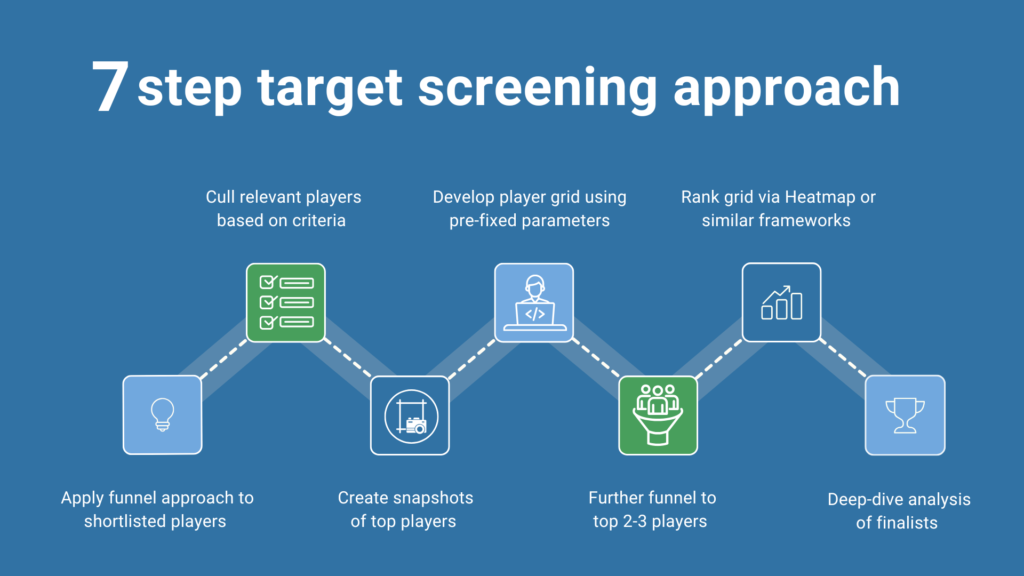Uncovering Hidden Value: How M&A Analytics Can Identify Undervalued Targets
In today’s competitive landscape, mergers and acquisitions (M&A) have become a key strategy for businesses to achieve rapid growth, diversify portfolios, or gain strategic advantages. However, the success of any M&A deal hinges on one crucial factor: identifying the right target(s). That is where M&A analytics comes into play, enabling companies to uncover hidden value and seize opportunities that might otherwise be overlooked.
The Challenge of Identifying Undervalued Targets
The global M&A market is immense, with countless companies vying for opportunities. In such a vast sea, finding an undervalued target can be akin to finding a needle in a haystack. Traditional financial metrics alone may not reveal the full picture. Many companies that are undervalued by conventional standards have untapped potential, hidden under layers of financial complexity, market inefficiencies, or evolving industry trends.
Specialized research and analytics is crucial for uncovering hidden gems in the market because it requires deep domain knowledge, focused attention, and tailored methodologies. More often than not, large enterprises and consulting firms often lack the expertise and agility needed to dive into specific sectors or emerging trends and may overlook opportunities.
This is where custom research and advanced analytics can make a difference. By leveraging data-driven insights, companies can dig deeper and uncover hidden value in potential targets, going beyond basic financial ratios or superficial market performance.

The Complexity of Target Screening in M&A
Screening for potential targets is not as simple as scanning financials for low multiples or cash flow statements. In today’s market, a multitude of factors—from operational inefficiencies to shifting market dynamics—can lead to undervaluation. These complexities require a more sophisticated, analytics-driven approach to uncover promising acquisition candidates that may not be obvious at first glance.
With M&A analytics, companies can take target screening to the next level. By using advanced data analysis, artificial intelligence, and machine learning, businesses can sift through vast amounts of data to find the most promising candidates based on key criteria.
Practical Example: Using Analytics for Target Screening
Consider a scenario where a global consumer goods company was looking for acquisitions to diversify its product portfolio. Using traditional screening methods, it might have dismissed a smaller regional player with declining revenues. However, by applying Target Screening analytics, it uncovered that the company had strong brand loyalty in its niche market and operational inefficiencies that could be optimized.
Further analysis revealed that the target had valuable patents and upcoming product lines that were not yet fully commercialized. By focusing on these intangible assets and fixing the inefficiencies, the acquirer realized they could unlock significant post-acquisition value, turning an overlooked target into a profitable growth opportunity.
How Technology Enhances M&A Analytics
Technological advancements have transformed the way M&A analytics is conducted. Machine learning algorithms, artificial intelligence (AI), and big data tools can process vast amounts of information quickly and accurately, identifying patterns and insights that would be impossible for humans to detect alone.
For instance, AI can analyze years of historical data across multiple sectors to spot undervalued companies with similar characteristics to those that have outperformed after acquisition. Predictive models can simulate the potential outcomes of different M&A scenarios, helping decision-makers assess the risks and rewards of each deal.
Additionally, data visualization tools make it easier for companies to present their findings, allowing decision-makers to quickly grasp the strategic value of a potential target.
The Future of M&A Analytics
As M&A activity continues to increase globally, the role of analytics in identifying undervalued targets will only grow. The ability to sift through vast amounts of data and pinpoint hidden value is becoming a core competitive advantage for organizations looking to stay ahead in their industries.
Incorporating advanced analytics into the M&A process not only mitigates risk but also uncovers opportunities that others might miss. For companies looking to achieve sustainable growth through acquisitions, embracing M&A analytics is no longer a choice—it is a necessity.
Conclusion
In the intricate world of M&A, research and analytics play a pivotal role in uncovering undervalued gems. By focusing on thorough target screening, firms can identify opportunities that offer significant value, ensuring successful and strategic acquisitions. Custom research and analytics not only streamline the process but also enhance the quality of decisions, driving long-term growth and success.
M&A analytics has revolutionized the way companies identify undervalued targets, providing deeper insights into financials, operations, market positioning, and industry trends. By leveraging the power of data, organizations can unlock hidden value and make smarter, more informed acquisition decisions.
As a Research & Analytics outfit, we specialize in using advanced M&A analytics tools to help businesses find undervalued targets and execute smarter acquisitions. Whether you are seeking growth, diversification, or strategic advantages, our approach ensures that you uncover hidden gems and create value through your M&A deals.
